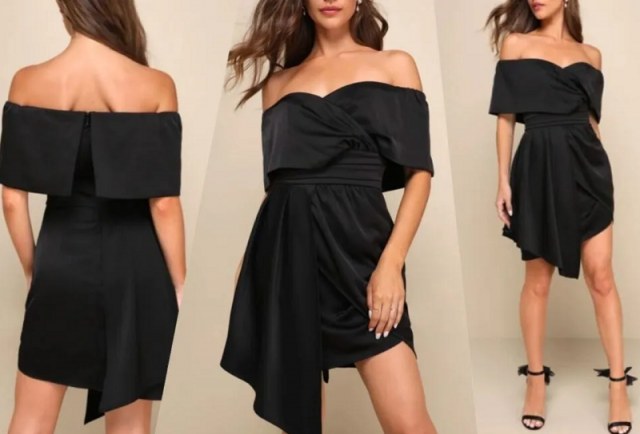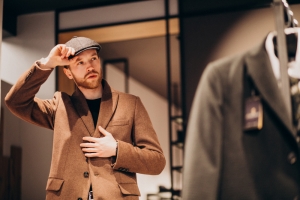Few garments carry as much cultural weight as the designer mini dress. Defined by its abbreviated hemline, it first disrupted fashion in the mid-20th century and has since become a lasting fixture in women's wardrobes. Today, the mini dress continues to represent confidence, independence, and modernity, with designers reimagining it season after season.
Symbolism and Cultural Impact
The introduction of the mini dress wasn't just a change in fashion—it was a cultural statement. During its early years, it symbolized the spirit of rebellion, freedom, and progress. Women began embracing shorter hemlines as a form of empowerment, stepping away from restrictive clothing that defined earlier generations. Over the decades, the mini dress became an emblem of self-assurance and individuality, representing not just style, but the freedom to express one's identity without limits.
From Statement to Staple
Originally a daring innovation of the 1960s, the mini dress was embraced as both a fashion statement and a social symbol. Its popularity has fluctuated through the decades, yet it has never disappeared entirely. Now, the designer mini dress has cemented itself as more than a fleeting trend—it is a staple silhouette reinterpreted in countless ways.
Evolution Through the Decades
In the 1960s, the mini dress redefined how women expressed themselves through clothing. Designers like Mary Quant and André Courrèges turned the silhouette into a global sensation. As the years passed, it evolved—taking on different shapes, fabrics, and details depending on the decade's mood. The disco era favored glitz and sequins, the 80s embraced bold shoulder lines, and the minimalist 90s gave rise to sleek, clean versions. Today, luxury designers and high-street brands alike continue to reinterpret the mini dress, making it an essential piece that balances nostalgia with innovation.
Across the Seasons
While traditionally associated with warm weather, mini dresses can transition through the year with thoughtful styling. In summer, lightweight fabrics and sleeveless cuts create a sense of ease. In autumn and winter, the same dress layered with opaque tights, boots, or oversized knits takes on an entirely new dimension. This seasonal flexibility has helped the mini endure as a truly adaptable piece.
Transitional Styling Ideas
The beauty of the mini dress lies in its adaptability. In warmer months, it pairs perfectly with sandals, straw hats, and light accessories. As temperatures cool, layering transforms its appeal—think leather jackets, long coats, or cozy scarves. Even a simple shift in footwear, such as replacing flats with knee-high boots, can make the outfit seasonally appropriate. This year-round relevance has ensured that the mini dress is not confined to any one season, but instead, continues to inspire creative outfit combinations throughout the year.
Fabrics and Silhouettes
Designer mini dresses come in a spectrum of forms. Structured tailoring in solid tones creates a refined and polished appearance, perfect for daytime or professional contexts. Sequins, embellishments, and metallic fabrics lend themselves to evening celebrations and holiday parties. Flowy cuts in silks or chiffons introduce movement and softness, while body-skimming designs highlight sharp, modern lines. Each variation contributes to the mini's ability to shift with mood and occasion.
Design Diversity and Textural Play
Every designer mini dress tells its own story through fabric and form. Textured materials like velvet and tweed add sophistication for colder months, while sheer chiffon and silk minis create an ethereal, feminine effect. Tailored minis exude confidence, often chosen for business or formal settings, whereas flowy silhouettes embrace ease and movement. The creative use of patterns, necklines, and sleeve lengths allows endless customization, ensuring that each mini dress is not only stylish but also deeply personal.
Styling Possibilities
The strength of the mini dress lies in its ability to adapt to different settings with minimal effort. For daytime, pairing with flats or sneakers creates a balanced, approachable look. For evening, heels, jewelry, and a bold clutch transform the same piece into something far more dramatic. Outerwear—from trench coats to cropped jackets—further alters its effect, proving the mini dress is as versatile as it is daring.
Effortless Versatility
Accessories play a key role in transforming a mini dress from casual to couture. Simple layering—like adding a belt to define the waist or statement jewelry to draw attention can completely change the tone of the outfit. A denim jacket keeps it relaxed, while a blazer adds polish and structure. The mini dress thrives on this versatility, allowing wearers to express different moods and personalities through subtle styling choices.
Timeless Appeal
The mini dress has endured because it captures a spirit of confidence and energy that resonates across generations. It allows for self-expression while offering countless variations, ensuring it never feels outdated. As designers continue to reinterpret the silhouette, the designer mini dress remains a lasting reminder that sometimes the boldest statements come in the smallest lengths.
Enduring Legacy
Decades after its introduction, the mini dress continues to command attention on runways, red carpets, and city streets. It represents empowerment, creativity, and a fearless approach to fashion. Designers across the world keep reinventing it, blending classic inspiration with modern innovation. The mini dress remains more than just a garment—it's a celebration of confidence, individuality, and timeless femininity that continues to inspire every generation of women.






